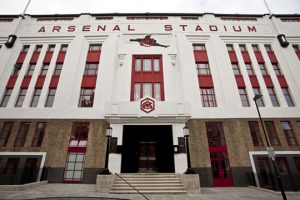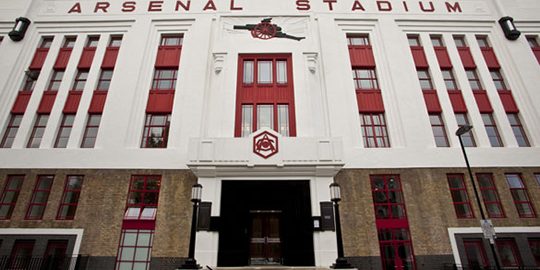Transfer from Highbury (N5) to Heathrow Airport
 The area now known as Islington was part of the larger manor of Tolentone, which is mentioned in the Domesday Book. Tolentone was owned by Ranulf brother of Ilger and included all the areas north and east of Canonbury and Holloway Road. The manor house was situated by what is now the east side of Hornsey Road near the junction with Seven Sisters Road. After the manor decayed, a new manor house was built in 1271 (see below) to the south-east; to differentiate it from the original manor and because it was on a hill, it was called Highbury, from which the area takes its name. In case you are looking for Taxi Transfer from Highbury (N5) to Heathrow Airport please use the Make a Booking page or the telephone number.
The area now known as Islington was part of the larger manor of Tolentone, which is mentioned in the Domesday Book. Tolentone was owned by Ranulf brother of Ilger and included all the areas north and east of Canonbury and Holloway Road. The manor house was situated by what is now the east side of Hornsey Road near the junction with Seven Sisters Road. After the manor decayed, a new manor house was built in 1271 (see below) to the south-east; to differentiate it from the original manor and because it was on a hill, it was called Highbury, from which the area takes its name. In case you are looking for Taxi Transfer from Highbury (N5) to Heathrow Airport please use the Make a Booking page or the telephone number.
The site for Highbury Manor was possibly used by a Roman garrison as a summer camp. During the construction of a new Highbury House in 1781, tiles were found that could have been Roman or Norman; unfortunately these have been lost.
Highbury Manor
Ownership of Highbury eventually passed to Alicia de Barrow, who in 1271 gave it to the Priory of St John of Jerusalem, also known as the Knights Hospitallers in England. The wealthy Lord Prior built Highbury manor as a substantial stone country lodging with a grange and barn.
In 1381, during the Peasants’ Revolt, Jack Straw led a mob of 20,000 rioters who “so offended by the wealth and haughtiness” of the Knights Hospitallers destroyed the manor house. The Lord Prior at the time, Robert Hales, who had taken refuge in the Tower of London, was captured and beheaded on Tower Hill. Jack Straw and some of his followers used the site as a temporary headquarters; consequently the derelict manor became known for the next 500 years as Jack Straw’s Castle. This should not be confused with the better known Jack Straw’s Castle, formerly a pub and now residential flats at Whitestone Ponds, Hampstead, which was named after the semi-legendary leader of the revolt.
Highbury House
The Manor of Highbury remained the possession of the Knights of St John until it was confiscated by Henry VIII in 1540. The land then stayed as crown property until Parliament began selling it in the 17th century. John Dawes, a wealthy stockbroker, acquired the site of Jack Straw’s Castle together with 247 acres (1.00 km2) of surrounding land. In 1781 he built Highbury House at a cost of £10,000 on the spot where Highbury Manor had stood. Over the next 30 years the house was extended by new owners, firstly Alexander Aubert and then John Bentley, to include a large observatory and lavish gardens.
The grounds around Highbury House started to be sold off in 1794. By 1894 Highbury House and its remaining grounds became a school. Finally in 1938 Highbury House was demolished and is now the site of Eton House flats (on Leigh Road), built by the Old Etonian Housing Association in 1939.
Taxi Transfer from Highbury (N5) to Heathrow Airport
In 1913 Woolwich Arsenal F.C. moved north to Highbury, dropping Woolwich from its name. Their chairman Sir Henry Norris took a 20 year lease on part of the grounds of St John’s Hall for £20,000. The new Arsenal Stadium (also called Highbury) was built there. St John’s Hall, originally called Highbury College (of Divinity), was built in 1825 on what is now Aubert Park and was a grand ionic-style building, reminiscent of the British Museum. St John’s Hall burnt down in 1946 and was replaced by a block of flats.
The club prospered and by 1925 had purchased the freehold. Arsenal’s subsequent success made Highbury well known, albeit initially with depressing effect on nearby housing. In 2006 the club moved to Ashburton Grove on the west side of Drayton Park in Highbury. The old stadium was converted into a luxury housing complex, with the two listed main stands being converted into apartments, ensuring their original exteriors remained almost entirely preserved. The unlisted North Bank and Clock End stands have been demolished to make way for entirely new apartment blocks. The pitch has been converted into a garden, with private gym and swimming pool located underneath it. Today, property in the area around the old Highbury stadium is highly sought after, and prices for apartments within the stadium starting at £300k.
The Arsenal Museum is a must for any lover of football, especially whose allegiances lie on the red side of north London. The museum housed in a modern building on the new Emirates Stadium complex houses a great deal of historic artefacts from the clubs history. It tells the story of the small north London team that slowly grew into one of the richest and most successful football teams on the planet.
The Clock Tower in Highbury Grove is one of the more interesting architectural features of this suburb of north London. The grand old structure was built in 1897 by the borough in celebration of the 6oth anniversary of the rule of Queen Victoria. The clock tower is a beautiful example of a late Victorian timepiece and is still today what many of the local people set their watch by.
The tennis facilities on the Highbury Fields are provided at a small charge by the local authority. There are several extremely well used and maintained courts to choose from.
In order to play you must pay a fee to the on site grounds keeper who will then give you access to your chosen court. It is a beautiful location on the edge of the common to play spor ts and always attracts a good crowd.
You can get to these great attractions by taking from Highbury a taxi to Heathrow Airport. The cost will be 38 GBP for a saloon car and the journey will take around 1 hour and 10 minutes.
Image: Wikipedia.

